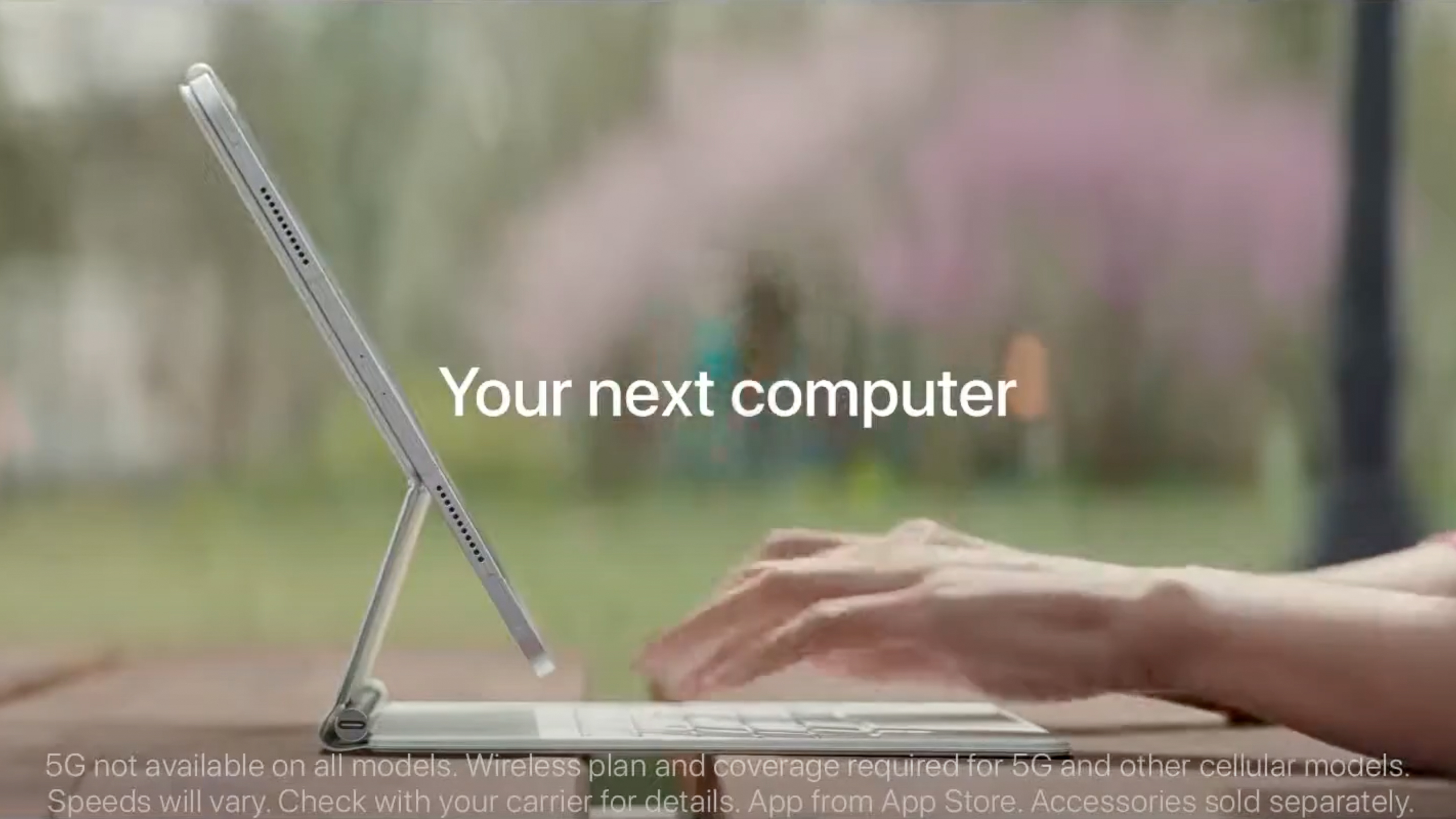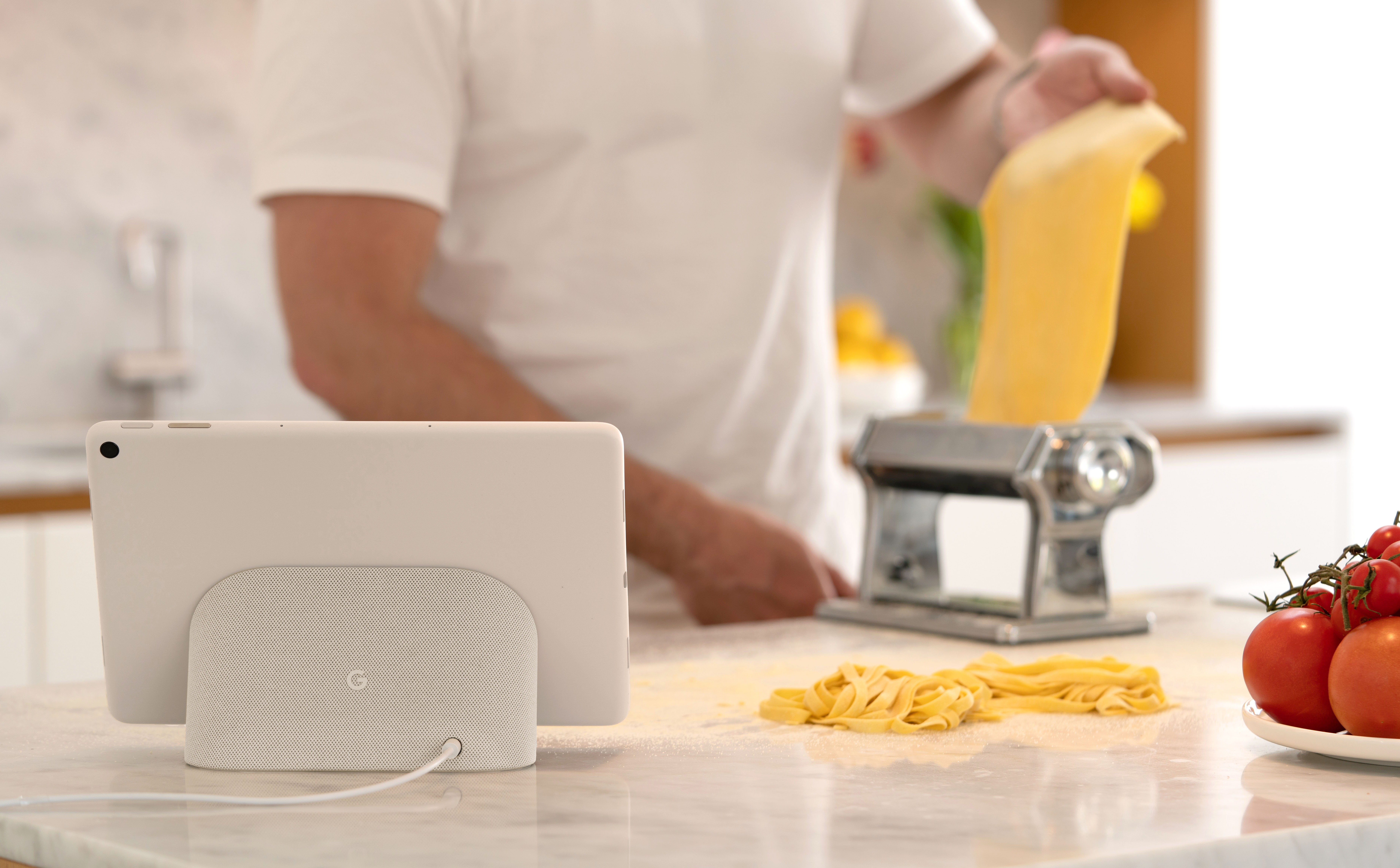The Pixel Tablet beats the iPad in ways too obvious to believe
We've been asking Apple for these features for years

If you’re choosing a tablet and you can afford an iPad, I used to say that you should buy one instead of an Android tablet – even the best Android tablet. Now, the Pixel Tablet has me rethinking the answer, and maybe even the question itself. Apple should be worried. With the speaker dock, the home controls, and the great price, along with a secret weapon for families, the Pixel Tablet forces the iPad to justify its higher price tag, and the argument feels stale.
What is the argument for an iPad over an Android tablet? Well, mostly that it just works. The best iPad is a simple, reliable, easy-to-use tablet. It has enough computing power that it never stutters or lags. Even older iPads can handle today’s tasks with aplomb. If you have an iPhone, that’s even better, because the two devices integrate seamlessly, sharing photos, apps, and accounts across platforms.

What about features? Well, the iPad doesn’t really have ‘features.’ It has a camera, sure, but you wouldn’t use it for photography if you have a nice smartphone. iPad photos aren’t as good. You can use an Apple Pencil or a keyboard with an iPad – you can even use a mouse – but those are accessories. The iPad isn’t packed with features, that’s beside the point.
The point is that the iPad gets out of your way and lets you do what you like. It runs every streaming service, and iPad apps usually look and behave better than Android tablet apps. It plays tons of games, and Apple often gets new mobile games before Android, with some exclusive titles made for Apple Arcade.
I didn't expect my tablet to do anything for me
The iPad doesn’t really DO anything, but I still recommend it over an Android tablet. That’s because Android tablets do too much of the wrong things, and not enough of the right. Android tablets like the Samsung Galaxy Tab S8 Ultra are bogged down with tons of Samsung One UI interface features that get in the way. Windows that float and split, disappearing tabs and floating buttons; it feels too busy when I’m just trying to work and play.
Sadly, the Snapdragon 8 Gen 1 processor in Samsung’s best Android tablet can’t compete with the Apple A14 Bionic in the basic iPad 10.9 (2022), let alone the big Apple M1 chip in the iPad Air.

If you want to buy a tablet and you have close to $500 to spend, Apple has been the default because everything you imagine doing with a tablet, the iPad does well. You might even get away with using the iPad as a laptop replacement, though it can be frustrating if you have a complicated workflow that involves saving and sharing a lot of files.
Sign up for breaking news, reviews, opinion, top tech deals, and more.
Apple pushed that laptop replacement idea hard, likely because they couldn’t figure out which direction to take the iPad. Is it the next computer? Apple ads tried to claim the iPad is a computer, but the smartphone is already the device we rely upon the way our elders relied on desktop computers and iMacs.

Along comes the Google Pixel Tablet, and it’s the first tablet that takes advantage of this weakness in the iPad. What’s the iPad for? Apple doesn’t have a great answer to that question, it just made a tablet that can handle whatever you throw its way. Google, on the other hand, has a very clear answer.
Pixel Tablet knows where it is and what it's for
The Google Pixel Tablet is for your home. It controls your home. You can take it from room to room, but you know where it’s supposed to go. You know where to find it, and if you find it there, it will always be charged.
The Charging Speaker Dock focuses the Pixel Tablet on your home. Google has a Nest home screen for the tablet when it’s docked, and the Pixel Tablet strongly resembles a Nest Max Hub, a 10-inch smart display with a speaker stand. If you were considering that device, or any smart display control for your home, the Pixel Tablet has you covered.

Of course, the iPad can also control your smart home with Apple Home or whatever service you prefer. For once, Apple is the more complicated option. Google has a Nest interface that works well on a smart display. Apple makes you dig through apps and folders. You could add controller widgets to a home screen, but it will never be as elegant as the dedicated Nest screen that appears when the Pixel Tablet is docked.
Now, if somebody asks me what tablet to buy, I won’t automatically start with an iPad recommendation. First, I’ll ask if you have any smarthome gear, or if you’ve considered a smart display. If the answer to either of those questions is yes, the Pixel Tablet may be worth a look.
If you're sharing a tablet, you'll want a Pixel Tablet
A home tablet should have a place to live in your home. It should make the home a better place
My second question will be whether you want to share the tablet with anyone else, especially older kids. If you plan on passing a tablet around, the Pixel Tablet may be the only tablet you should buy. With an iPad, you can only have one user account. Everyone who has the iPad’s login password can access every message, every photo, and every private file.
What the iPad needs is a multi-user feature, like you find on a desktop computer (or a Samsung Galaxy Tab). Google has beaten Apple to this long-requested multi-user feature, so you can share a Pixel Tablet without worrying about your family members or friends digging around in your personal stuff.

These are game-changing features for a tablet, with an acute understanding of how most people use large screen mobile devices. If your tablet is for your home, Google’s Pixel Tablet seems to be a better option than an iPad.
A home tablet should have a place to live in your home. It should make the home a better place. It should be accessible to everyone who lives in the home, while still maintaining the boundaries of separate bedrooms and closets. Google’s Pixel Tablet does all of this, and I haven’t even mentioned any of the cool Pixel features that I love on Google’s best Pixel phones.
Google got the Pixel Tablet price right, too
The most astounding aspect of the Pixel Tablet may be the price. Apple recently jacked up the price of its base model iPad. While the last generation iPad 10.2 (which is still available) cost just $329 / £319 / AU$499, the newer iPad 10.9 is $449 / £499 / AU$749, and that’s with an unacceptably slim 64GB of storage.

The Pixel Tablet costs $499 / £599 / AU$899 and it comes with the Charging Speaker Dock. The Tensor G2 chip inside is arguably slower than the A14 Bionic chip in the iPad, according to benchmark scores, but it is specialized for some amazing photo editing and other tasks that Google builds into Pixel devices.
Besides, the Pixel Tablet isn’t confused and trying to be a computer. It isn’t a laptop replacement. It’s a home tablet. While tablets are mostly used at home, this is the first to define the category. Apple’s tablets defy definition. The iPad used to be the default answer to the tablet question, but now there are more questions to ask, and Apple should be afraid of multiple choices.

Starting more than 20 years ago at eTown.com. Philip Berne has written for Engadget, The Verge, PC Mag, Digital Trends, Slashgear, TechRadar, AndroidCentral, and was Editor-in-Chief of the sadly-defunct infoSync. Phil holds an entirely useful M.A. in Cultural Theory from Carnegie Mellon University. He sang in numerous college a cappella groups.
Phil did a stint at Samsung Mobile, leading reviews for the PR team and writing crisis communications until he left in 2017. He worked at an Apple Store near Boston, MA, at the height of iPod popularity. Phil is certified in Google AI Essentials. His passion is the democratizing power of mobile technology. Before AI came along he was totally sure the next big thing would be something we wear on our faces.